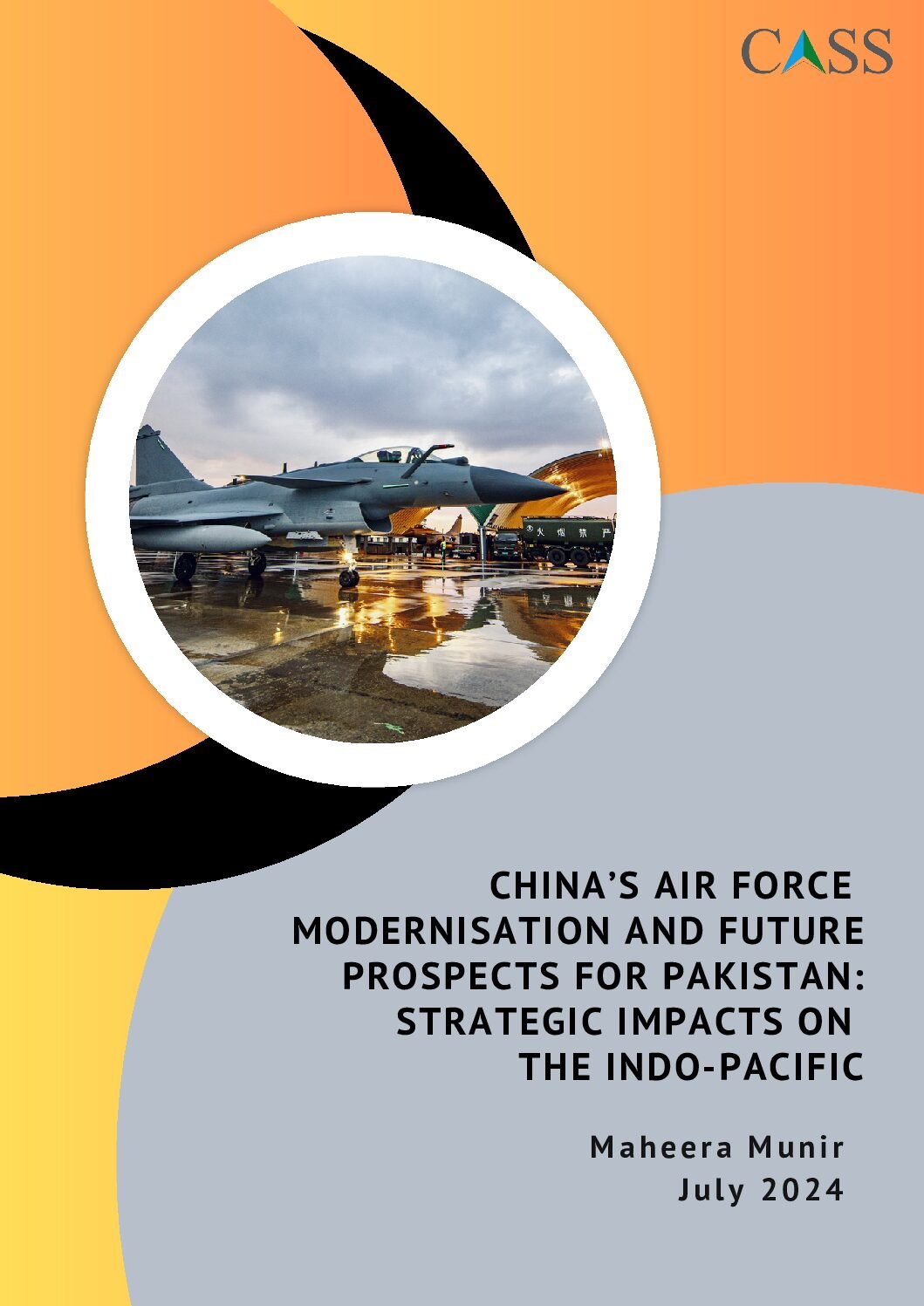CHINA’S AIR FORCE MODERNISATION AND FUTURE PROSPECTS FOR PAKISTAN

ABSTRACT
The strategic shift in China’s national security strategy from ‘defence’ to ‘active defence’ underlines a crucial evolution in the Chinese Air Force. Rapid modernisation has put the People’s Liberation Army Air Force (PLAAF) on the trajectory to become the world’s leading air force by 2049. Concurrently, Pakistan, being a close strategic partner of China, has significantly benefited from this modernisation through joint projects like the JF-17 Thunder, acquisition of J-10C, Wing Loong drones, Chinese air defence system, and numerous other air defence capabilities. This paper argues that Pakistan-China air defence cooperation has not only reduced Pakistan’s reliance on its traditional defence suppliers but has enhanced its position in the Indo-Pacific strategic landscape as well as in the global defence market. However, there are certain resource limitations, both in terms of capital and technological skills, for which Pakistan needs to enhance its air defence cooperation with China. While the prospects underscore the acquisition of the J-35 stealth fighters and upgraded unmanned aerial systems, Pakistan-China defence cooperation must expand to collaboration in the R&D of sixth-generation aircraft, and other newer technologies. These steps will significantly enhance Pakistan’s qualitative advantage against regional adversaries in South Asia and the wider Indo-Pacific.

CASS LAhore

The Centre for Aerospace & Security Studies (CASS) was established in July 2021 to inform policymakers and the public about issues related to aerospace and security from an independent, non-partisan and future-centric analytical lens.


